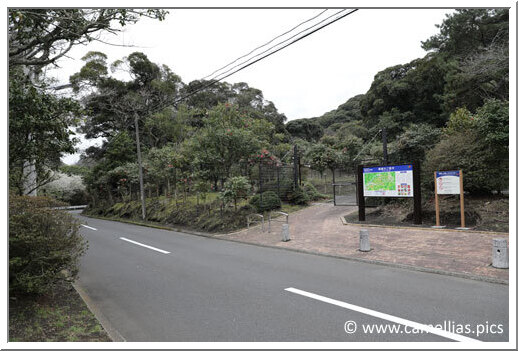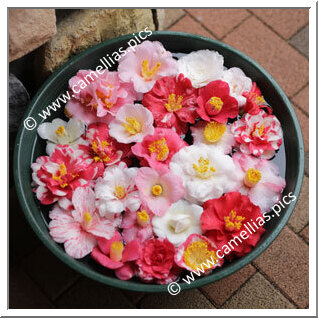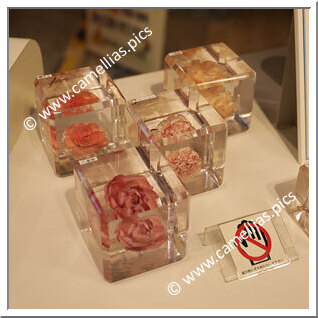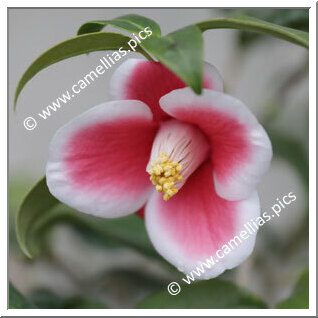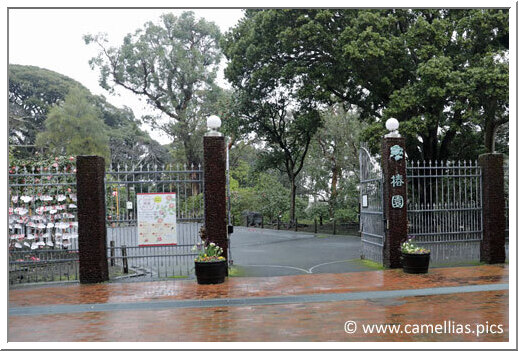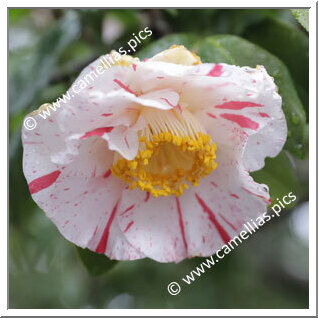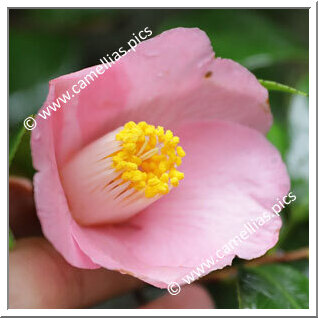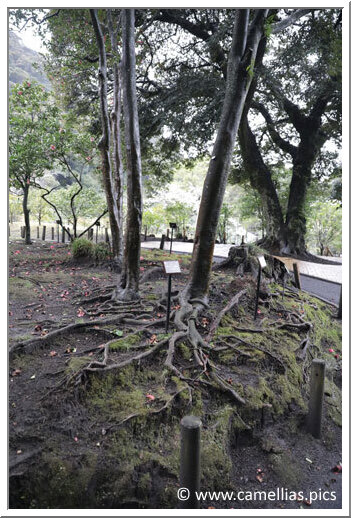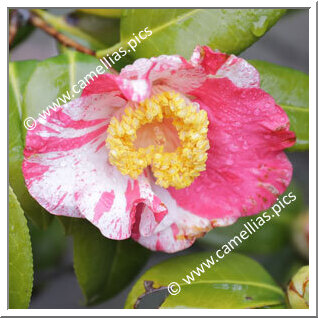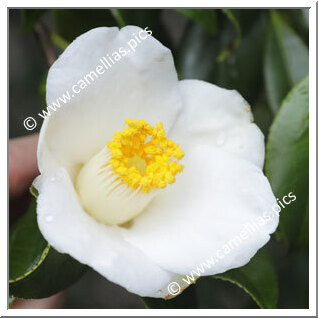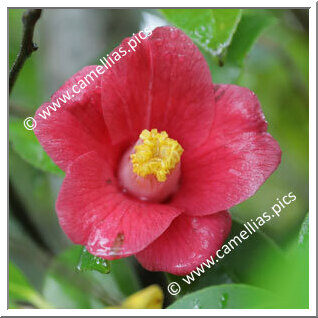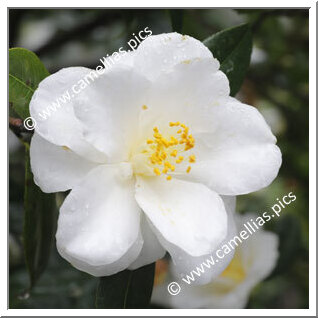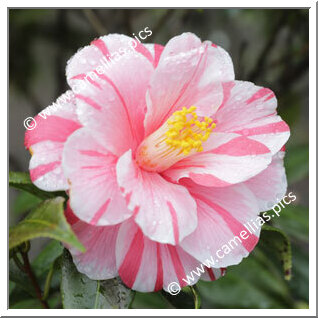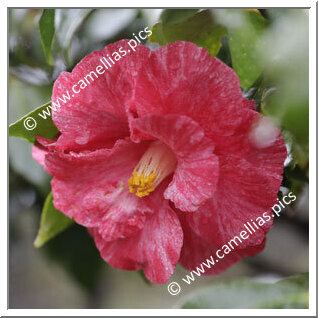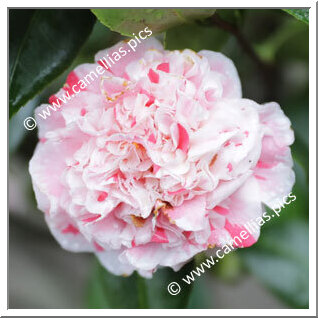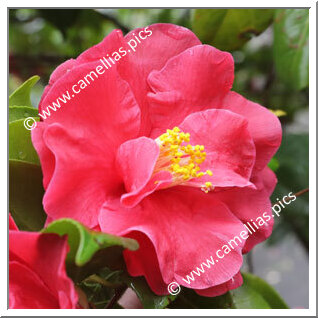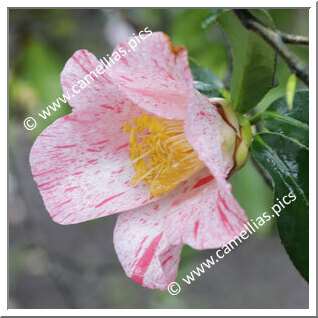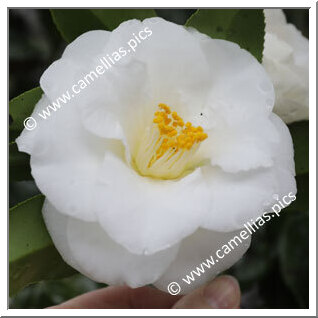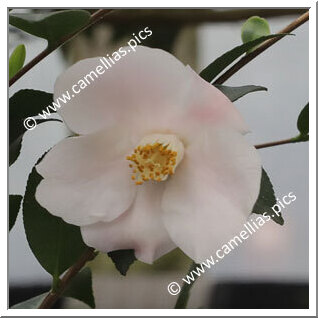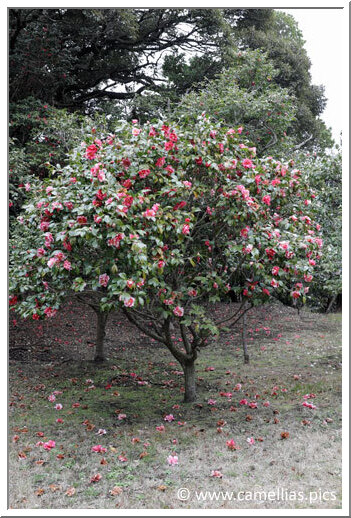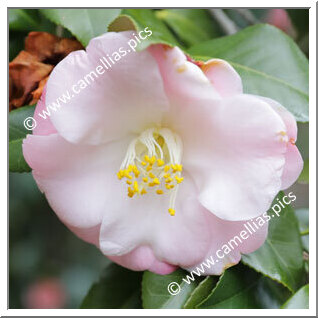This is our second visit to Izu-Oshima. This is the Camellia Garden of Tokyo's Oshima Metropolitan Park. The park was created in 1938 and the camellia collection in 1940. It has approximately 3,200 trees, divided into a thousand species and cultivars. There are also 5,000 wild camellia japonicas. The total area of the park, which also includes a zoo and a campground, is 324 hectares. It is one of the largest camellia gardens in Japan.
We try to capture as best we can the very special atmosphere of this magnificent garden, one of the most beautiful in Japan. All the camellias on this page were born in Japan. The richness of the collection and the diversity of Japanese cultivars allow us to avoid more Western cultivars that we have encountered in other gardens, but to which a large section is dedicated.
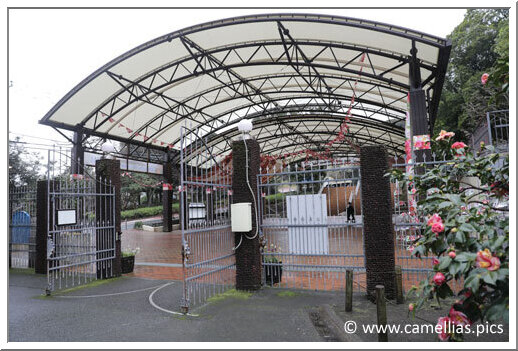
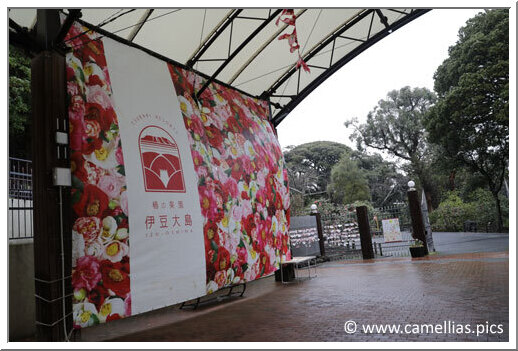
We begin our tour at the Camellia Museum, located in the Camellia Pavilion, near the zoo. It was established in 1989. In addition to information about camellias, there is an exhibition of fresh flowers and artifacts. Everything is very well-kept.
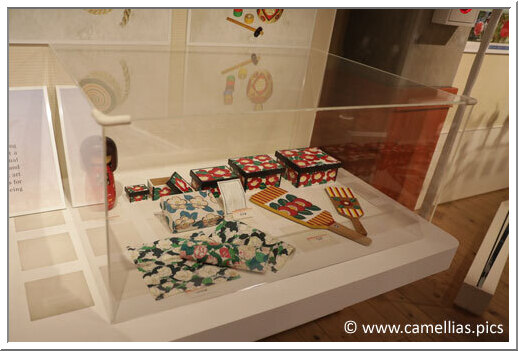
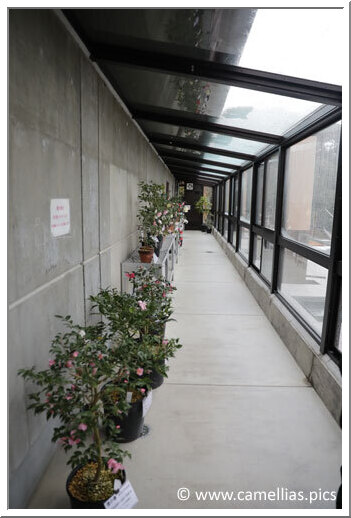
Behind the exhibition hall, there is also a greenhouse with beautiful potted camellias.
We now enter the park through its main entrance. It is divided into nine thematic sectors, based on origin (for foreign camellias, for example), color, region of origin, or flowering period. There is also a sector for reticulata, sasanqua, Higo japonica... Everything is well marked and named. It is easy to move from one sector to another.


These pennants say "Spring Festival." We were in Izu-Oshima during the Camellia Festival, which lasts two months. It's a major event on the island.

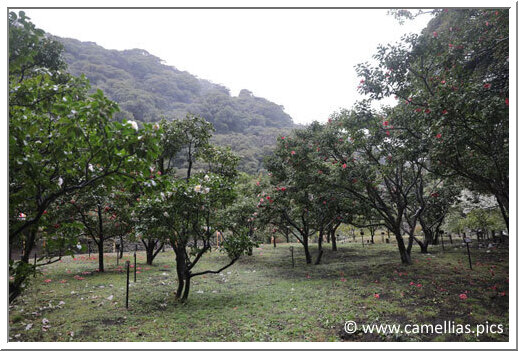

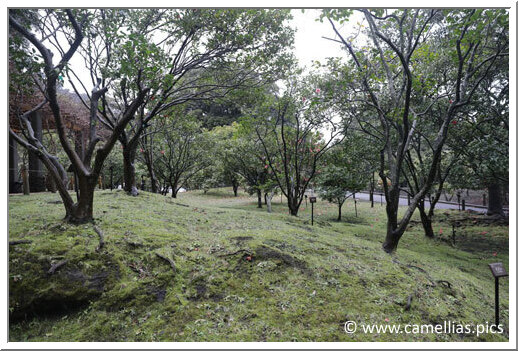
We go from one sector to another. It's a peaceful walk. And we take our time.
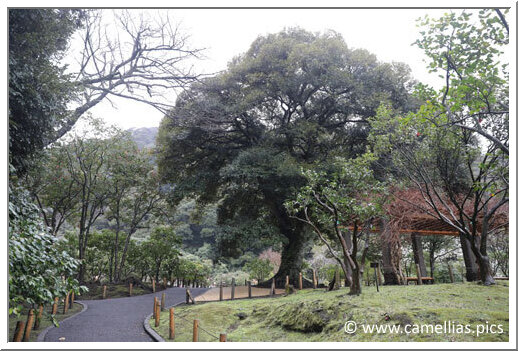
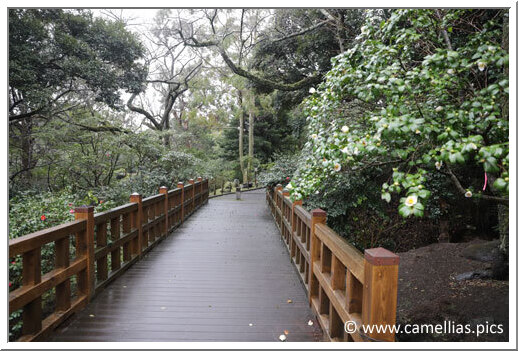
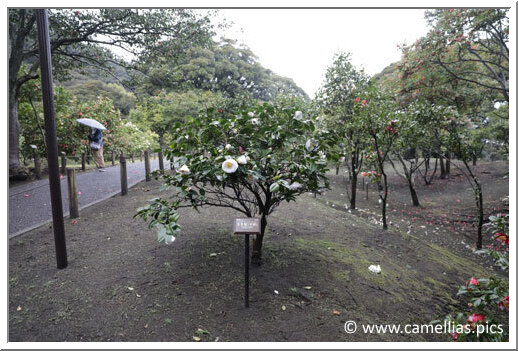
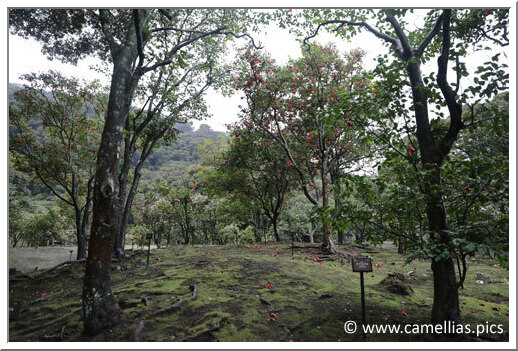
The collection is truly rich, both in terms of the shape and color of the flowers. We discover the immense variety of Japanese camellias.
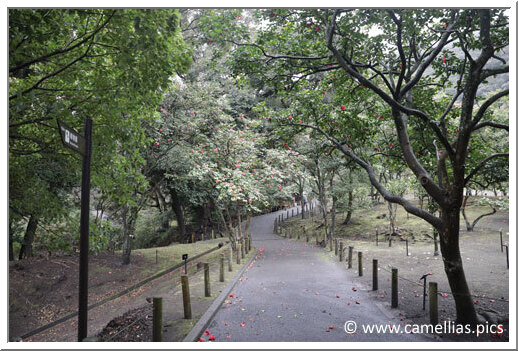
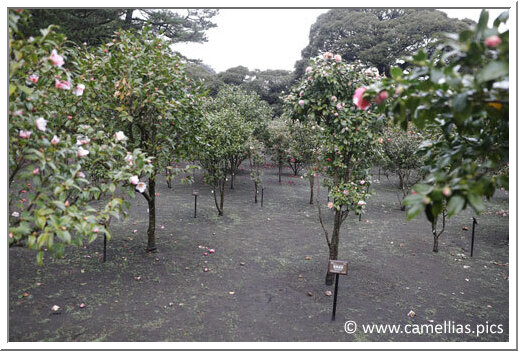
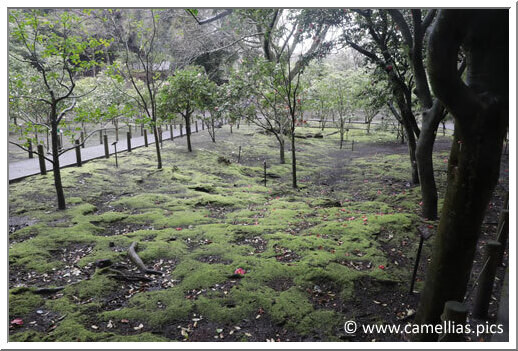

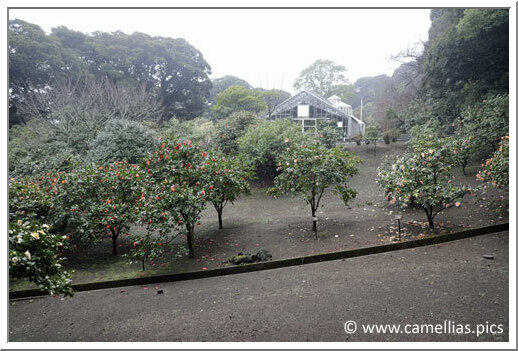
Above, the Higo Japonica section. Since it's impossible to admire the Kumamoto collection, we were delighted to find a section dedicated to them.

We arrive at the greenhouse. It features a temporary exhibition during the Camellia Festival. It includes fragrant camellias, some foreign species, and a few European camellias.
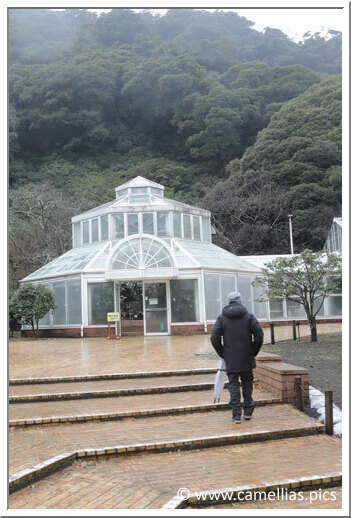
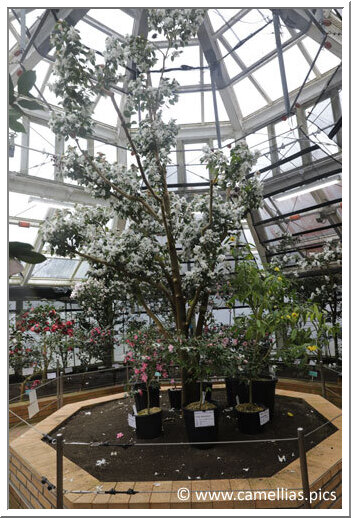
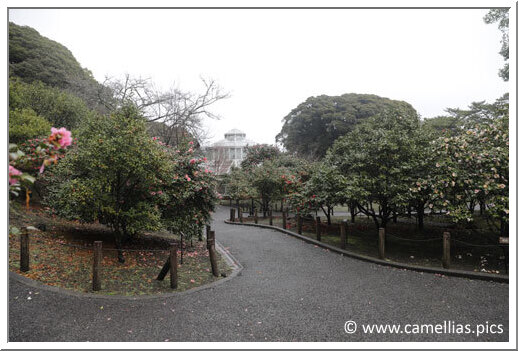
We leave the Camellia Garden of Tokyo Metropolitan Ôshima Park, but we take advantage of the last day in Izu-Ôshima to make a second visit to the last part of the garden:
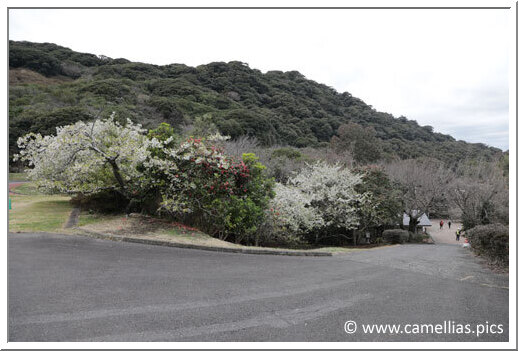
This part is very different from the garden we visited. We are in a camellia forest. There are fewer named cultivars, giving way to wild camellias. Let's not forget that Izu-Oshima is a garden island with three million camellias.
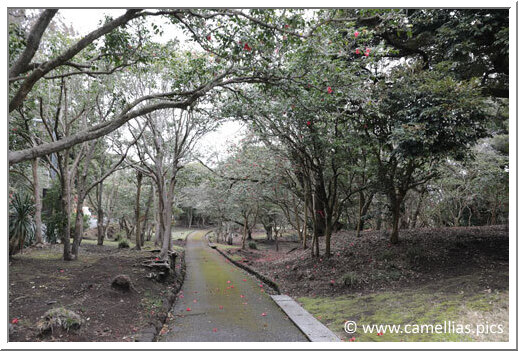

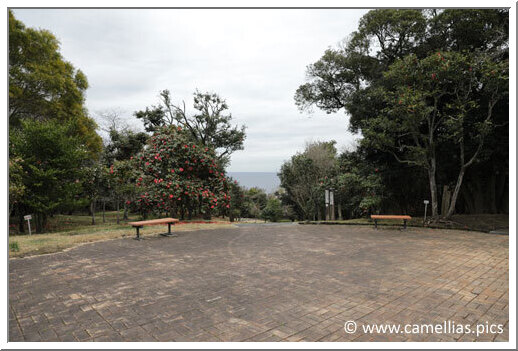

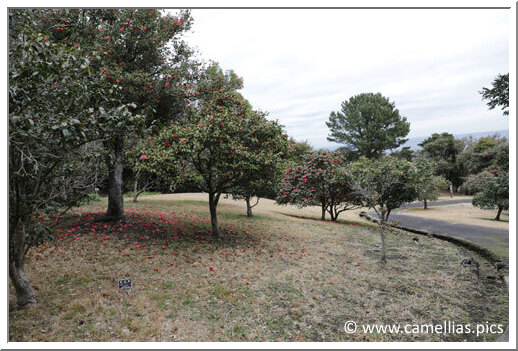
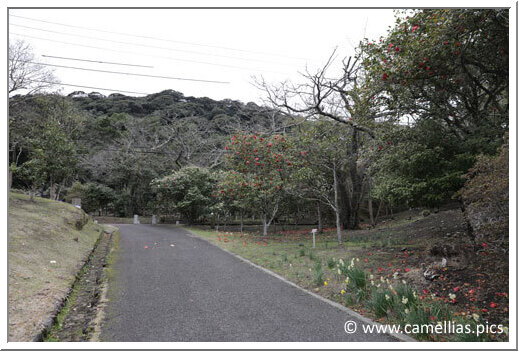
When leaving this area, simply cross the road to reach the camellia garden, without going through the main entrance.
